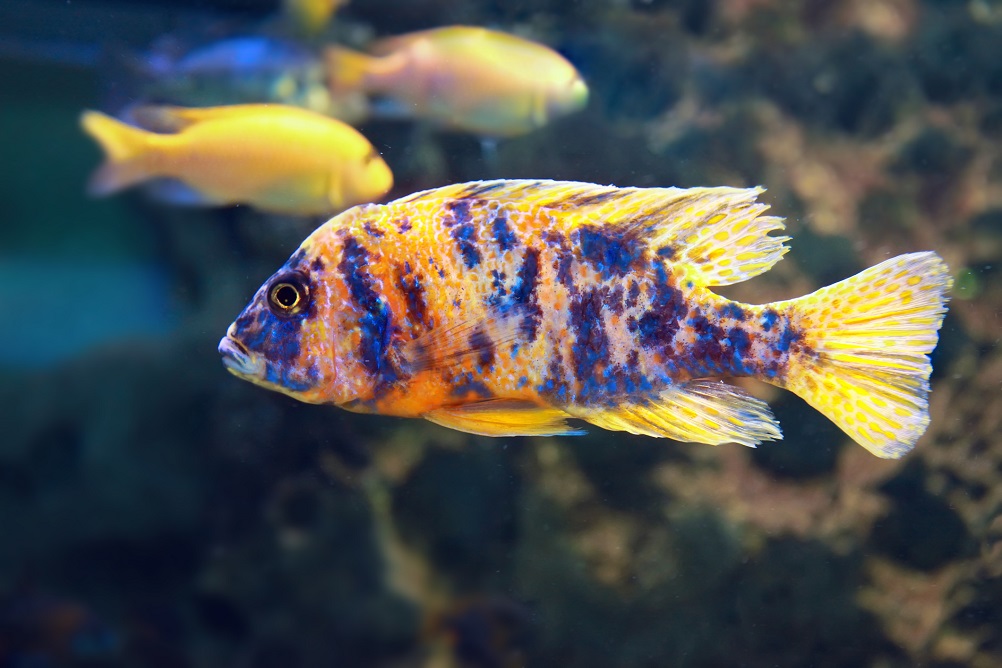With thousands of different species available in a wide variety of gorgeous colors and patterns, the Cichlidae family (“cichlids”) consists of bony, freshwater fish that are found in numerous regions around the world. With their vibrant hues, captivating personalities, and relatively low-maintenance needs, cichlids are popular among both new and experienced hobbyists alike.
If you are considering adding cichlids to your tank, as a way to change things up, here are a few species that will provide a beautiful splash of color:
- Available in dozens of eye-catching patterns and colors, angelfish are one of the most popular types of cichlids. Actually, many people don’t realize they are actually cichlids. These beauties must be kept in a tank of at least 40 gallons, and thrive in groups with at least five being a target. However, avoid adding tankmates that are smaller, tend to nip at one another, or are overly active. Cory Catfish (Corydoras) are great choices because they tend to leave angelfish alone.
- Electric Blue Cichlids, also known as electric blue haps, the males of this species from Lake Malawi are as vibrant as their name suggests. They are recommended for those with fish-keeping experience and require at least three females for every male in order to minimize breeding stress. If you decide to add tankmates, opt for other Malawi cichlids of a similar size and non-aggressive disposition. When setting up your electric blue cichlid tank (at least 70 gallons is recommended for even a smaller harem), be sure to use hard water with a basic pH, plenty of rock decorations, and a sandy substrate to mimic their natural habitat.
- Cockatoo Cichlids hail from South America. Male cockatoo cichlids feature dazzling yellow-orange hues on their dorsal fins, which they flash during breeding time or to show aggression. Cockatoo cichlids are on the small size and are relatively easy to care for, making them a great choice for novice fish-keepers. These beautiful fish require longer aquariums of at least 20 gallons per pair, a slightly acidic pH, and relatively soft water, as well as plants, caves, and other decorations in which they can hide. They can be kept with other non-aggressive species, such as neon tetras.
- Yellow Lab Cichlids, also called electric yellow cichlids, are a striking species from Lake Malawi. They have one of the most peaceful dispositions of any cichlid, making them an excellent addition to nearly any tank. However, it’s important to have plenty of rock formations, hard water with a basic pH, and a light-colored sandy substrate. In addition, provide several females for every male to reduce stress during breeding time.
- Jewel cichlids offer a unique and mesmerizing appearance, with stunning red coloration, iridescent blue spots, and yellow tail fins. However, their aggressive nature makes them best-suited for single-species tanks. You want to keep them in confirmed pairs for best results. Jewel cichlids love to dig, so provide them with a sandy substrate and some sturdy plants, such as Java fern and Anubias.
To optimize the health and vibrancy of your cichlids, be sure Hikari® is a big part of your feeding plan! We offer several unique formulations specifically designed to bring out the best color in your cichlids, while helping them live a long and health-filled life, just like the more than 20 year old cichlids we have in our offices. Visit https://www.hikariusa.com/cichlid.html to learn more about our species-specific diets.
(Source: https://www.buildyouraquarium.com/types-of-cichlids/).

